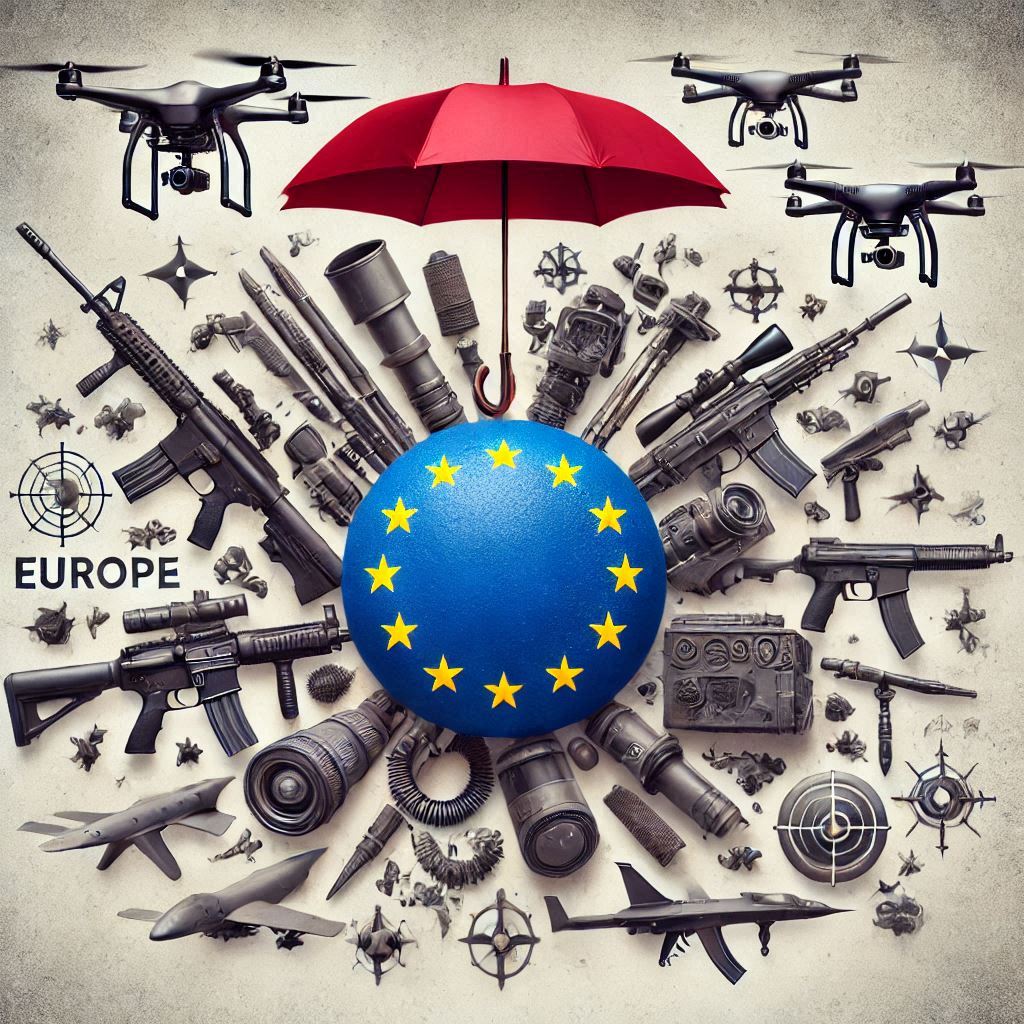How Much Could a War Cost?
Investing in Defense to Safeguard Peace

Article by Vision Team
How much would it cost the European Union to establish a defense system credible enough to protect EU from the aggression of a third country? How could we ever finance an increase in military spending while also ensuring stability of weakened public budgets, without further cutting healthcare spending, which would irreparably fracture the societies we aim to defend? And finally, how can EU 27 achieve what even the six founding countries, united to prevent another war, could not accomplish? These questions demand answers that can no longer avoid.
One of Donald Trump’s well-known negotiation techniques involved his demand for European nations to increase military spending to 5% of GDP in exchange for continued protection under NATO. This is an exaggerated demand because, in reality, even the United States does not allocate such a hyperbolic amount to defense. Despite being the country that alone accounts for 37% of global military spending, U.S. defense expenditures, according to SIPRI data, amount to “only” 3.4% of its GDP—a low figure compared to the country’s historical average of 6.1% since 1948, which has decreased in recent years. Meanwhile, the EU’s military spending slowly keeps rising from under €400 per capita in 2018 to over €600 today, even though it still falls short of NATO’s recommended 2% of GDP.
Percentage of Military Expenditure on GDP in the United States from 1948 to 2023.

Source: SIPRI
The debate over the percentage of GDP allocated to military expenditures misses the point. The numbers show that combining the military budgets of Germany and France (€127 billion) already surpasses that of Russia (€109 billion). More importantly, the cost of being prepared for war to secure peace requires considering how technology is reshaping the equation.
The conflict in Ukraine demonstrates an increased reliance on drones, which are similar to flying mobile phones capable of crossing enemy lines unnoticedly. In Lebanon, even a pager can carry the explosive sufficient to destroy an enemy. Larger drones can be captured through electronic communication systems, causing them to malfunction without shooting them down. However, more expensive systems are also rendered useless by electronic attacks that transform technological sophistication into vulnerability. The essence of warfare is evolving, even if the Donbass front remains locked in trenches that swallow human lives like the war more than a century ago. The expense that an effective military deterrent entails cannot fail to change. In a technological context, the victory of a war doesn’t necessarily belong to the biggest spender. Israel’s military budget is one-third that of Saudi Arabia, yet it dominates the Middle East due to its constant innovation.
Based on these observations, it becomes clear that Europe must spend more on defense but, more importantly, spend better. Three evident issues emerge from the European Defence Agency (EDA) figures, highlighting a gap between grand declarations and tangible action.
First, while the 27 EU nations collectively spend as much as China with €280 billion, China invests heavily in essential research activities to avoid being left with obsolete equipment.
Second, while the European Commission shows that joint procurement could save €70 billion for reinvestment into a nuclear defense system, the value of joint procurement, compared to the nationally managed procurement, has decreased. 2 For example, the joint contracts for digital technology acquisitions fell from 11% of the total in 2018 to 6.5% in 2023. The new Commission budget increases the allocation for European Defense Fund, but the amount—€8 billion over seven years—represents just 0.5% of the EU budget.

Source: EDA (European Defence Agency)
Finally, while EU’s military spending on equipment has more than doubled, a growing share of supplies comes from non-EU countries, especially the United States. This represents that EU is missing another moment to transform a crisis into an opportunity. The opportunity was to strengthen, modernize, integrate, and improve the efficiency of fragmented European defense industry. Yet, once again, grand ambitions yielded meager results. The task now falls to two former prime ministers born in the former Soviet Union—Estonian Kaja Kallas, the EU’s High Representative for Foreign Affairs, and Lithuanian Andrius Kubilius, who will lead the defense and space dossier.
Winning the defense challenge requires resolving some contradictions in a fragile structure. It is right to begin establishing a common defense—and consequently, a common foreign policy—but this must be done with willing partners, without waiting for skeptics, and with openness to those who might share the agenda, such as the United Kingdom. It is also right to fund common debt for defense but only for the most advanced projects, which will pioneer defense capabilities. It would be urgent to establish a European agency dedicated to research, akin to the U.S. DARPA, whose innovative projects—most famously the internet—have had far-reaching impacts beyond Pentagon interests.
1 https://eda.europa.eu/docs/default-source/brochures/2022-eda_defencedata_web.pdf?.com
2 https://www.europarl.europa.eu/RegData/etudes/BRIE/2023/739294/EPRS_BRI%282023%29739294_EN.pdf?.com
References:
European Defence Agency. 2022. DEFENCE DATA 2022 Key findings and analysis. Link
European Parliament. 2023. European defence industry reinforcement through common procurement act (EDIRPA). Link

